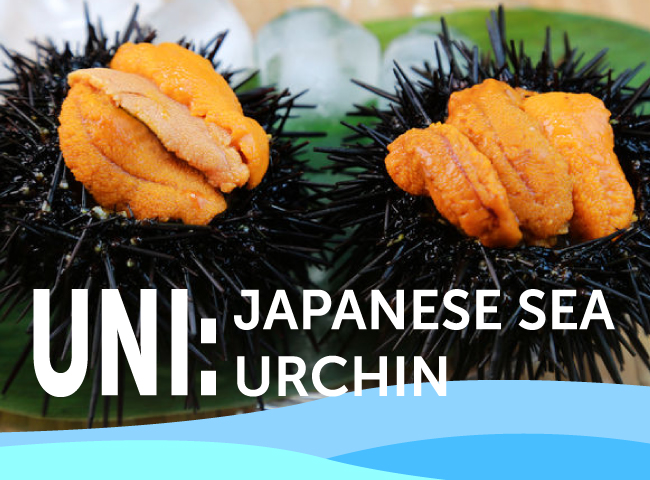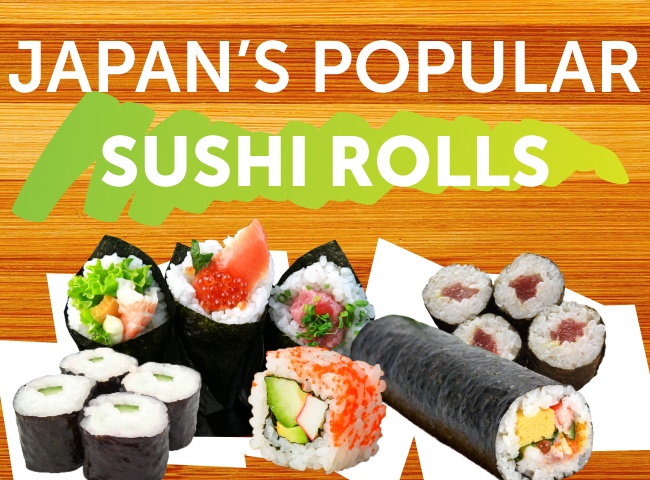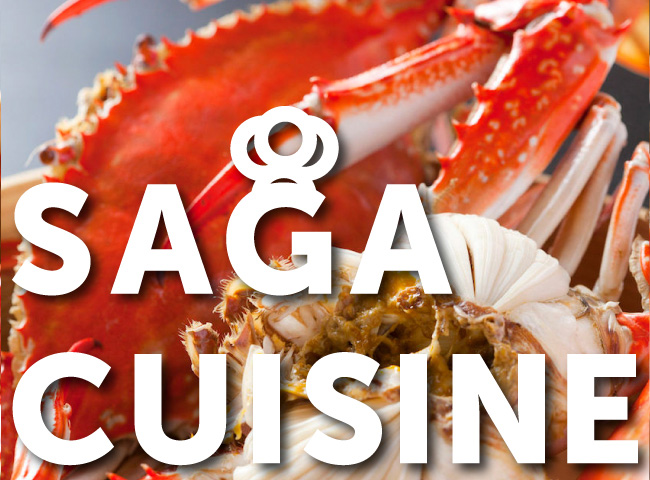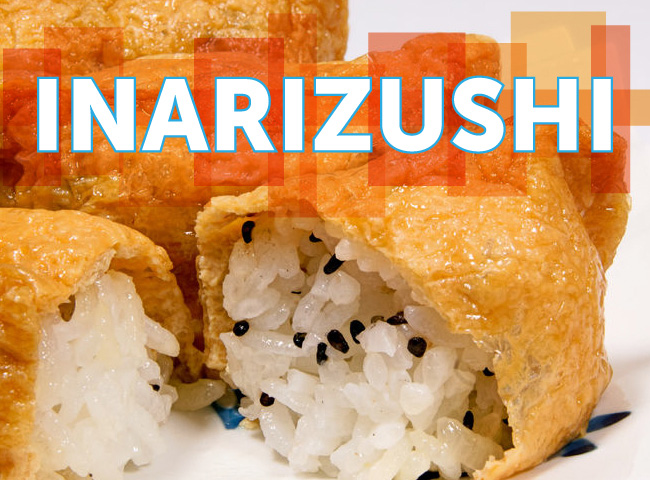Types of Salmon Sushi in Japan: Salmon Nigiri to Oshizushi
Salmon sushi is a favorite around the world, prized for its mild flavor and pleasant fattiness that’s packed with omega-3 acids without being too rich or oily. However, it may surprise you to find out that sushi salmon only recently came to be eaten in Japan in the past generation or so. Until about 30 years ago, salmon was only eaten cooked or grilled in Japan. Now, salmon sushi can be found all throughout the country, from kaiten-sushi (conveyor belt sushi) spots to exclusive sushi restaurants.
Read: How to Eat at Kaiten-Sushi (Conveyor Belt Sushi) Restaurants
Read on to learn all about the different varieties of delicious salmon sushi that can be found in Japan.

Aburi Salmon, Temaki & More... Find Your Favorite Salmon Sushi
Salmon Nigiri
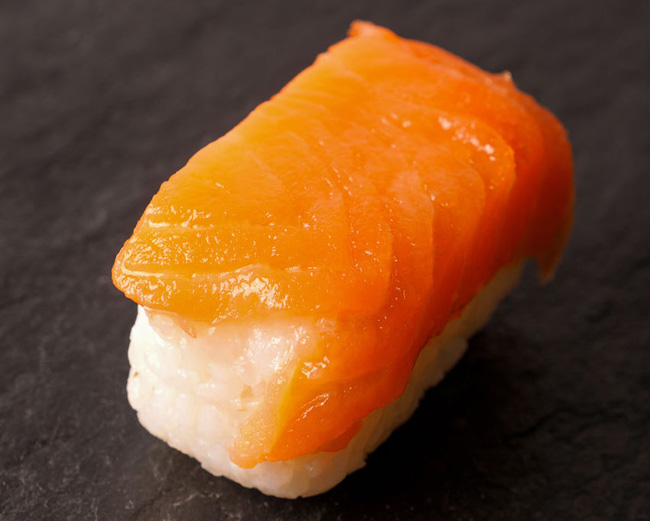
Salmon sushi is often eaten “nigiri” style, with a ball of vinegared sushi rice topped with a slice of salmon. It’s commonly enjoyed with wasabi and soy sauce, or salt and a bit of citrus. Although cooked salmon is known as “sake” (pronounced “sha-keh”) in Japanese, when ordering sushi it’s typically referred to as “sahmon”.
Aburi Salmon Nigiri

Aburi nigiri is regular salmon nigiri sushi that has been broiled “aburi” style with a blowtorch before serving. The fattiness of the salmon creates a richly grilled surface and a creamy center for every bite.
Saikyo Miso-Broiled Nigiri
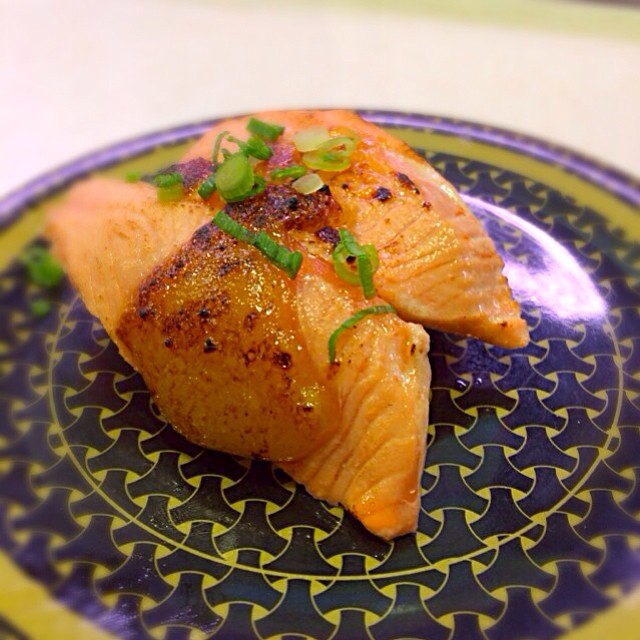
Image by mk-pick on Flickr
Saikyo miso originated in the Kyoto region and has a delicate, naturally sweet flavor that pairs wonderfully with the rich fattiness of salmon. Saikyo miso-broiled salmon nigiri sushi, made with salmon that has been marinated in saikyo miso and slightly cooked with a blowtorch.
Salmon Belly Nigiri

Image by Roberto Maxwell on Flickr
Salmon harasu (belly) is the counterpart to tuna’s toro, or the fatty cut from the belly of the fish. Salmon belly is incredibly rich and also an uncommon menu item, so you’re more likely to find it in a proper sushi restaurant rather than a kaiten-zushi shop. If you’re lucky enough to spot it on a sushi menu, definitely be sure to give sake harasu a try.
Salmon Hosomaki
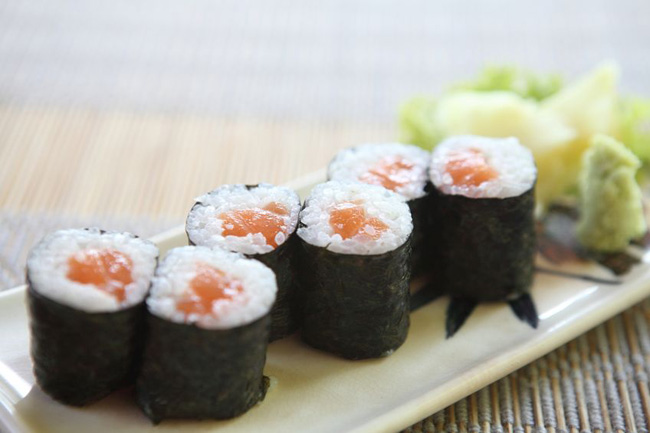
Hosomaki are thin sushi rolls with nori seaweed on the outside, and sushi rice and fish on the inside. Salmon hosomaki from Japan was the inspiration for the “Philadelphia roll” that’s popular in other countries, a sushi roll filled with salmon, cream cheese and cucumber.
Salmon Temaki
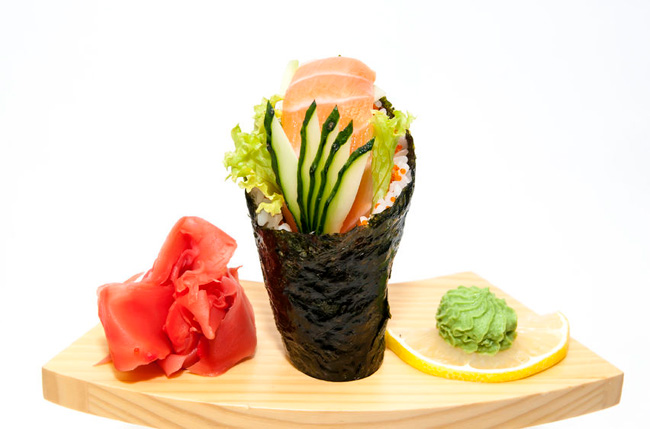
Salmon temaki, or “hand rolls”, are an easy way to enjoy salmon sushi. They’re made with a small sheet of nori seaweed topped with sushi rice, sliced salmon, and garnishes, that’s rolled into an ice cream cone shape. It’s very easy to hold and to eat-no chopsticks required!
Salmon Oshizushi
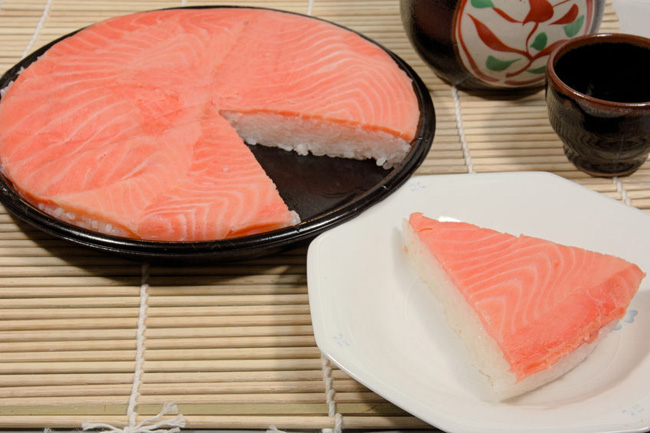
Oshizushi, or “pressed sushi”, is a traditional style of sushi that originated in the Kansai region in the west of Japan. It’s made with a wooden mold into which sushi rice, fish, and other ingredients are added, then pressed to form a firm block shape. The sushi block can then be sliced into individual pieces in a triangle, rectangle, or square shape. Salmon oshizushi can be made with smoked, raw, or aburi-broiled salmon.
Salmon Nigiri with Assorted Toppings

A number of toppings can be enjoyed with salmon nigiri, especially at kaiten-zushi shops, which often come up with unique, non-traditional combinations for their sushi. Look for more traditional topping pairings like salmon with tobiko (flying fish roe) to more unusual combinations like salmon topped with shredded cheese or marinated salmon with mayonnaise and thinly sliced onion.
Ikura Gunkan Maki
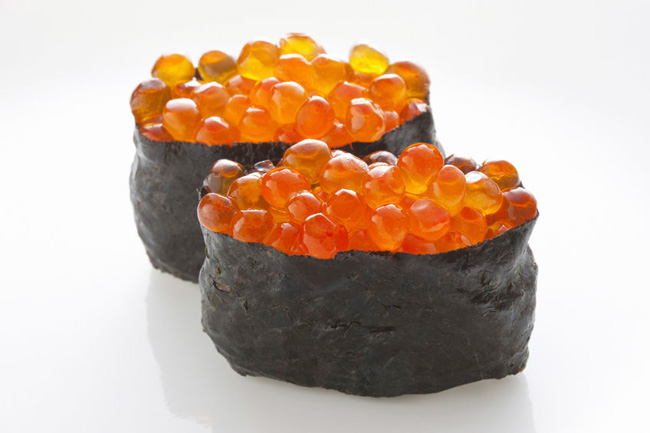
Ikura is salmon roe that has been marinated in soy sauce. When eaten in sushi, it’s typically served “gunkan maki”, or “battleship”, style. This type of sushi consists of a strip of nori seaweed wrapped around a ball of sushi rice, which creates a space at the top on which to spoon the loose ikura. The glistening orbs of ikura have a bright, jewel-like color and a buttery flavor.
Salmon Chirashizushi

Chirashizushi, which roughly translates to “scattered sushi”, is a style of sushi where the toppings are lightly scattered over a dish of sushi rice. Salmon chirashizushi often includes finely shredded Japanese omelet and ikura salmon roe. In addition to raw salmon, smoked salmon or salted salmon flakes can also be used.
Zuke-salmon

Zuke-salmon refers to salmon that has been marinated in either mirin, soy sauce, vinegar, sake, shio koji (fermented rice), and sake kasu (a pickling agent left over from the sake making process), or a combination of these. It may be used as a nigiri topping, or chirashizushi-style. The surface of the marinated fish can be grilled to create a sumptuous caramelization.
Tip on Sushi Etiquette
Do call ahead and make a reservation if you’re going to a higher-end sushi restaurant. If you can’t speak Japanese, have your hotel concierge book it or ask a friend. Be on time and don’t be a no-show!
Don’t wear any body fragrance such as perfumes or colognes, as the scent can interfere with the aroma and flavor of the sushi.
Do try to finish everything you order. If you’re at a kaiten-sushi restaurant, make sure not to take more than you can eat. When you’re finished eating, it’s best practice not to linger at the table or counter chatting as there may be other customers waiting to enter the restaurant.
Read: How to Eat Sushi like a Native: 8 Sushi Etiquette Tips
Be Sure to Try Different Types of Salmon Sushi in Japan
Salmon may be a relatively newer type of sushi, but it has quickly become a favorite for people all around the world. Be sure to try it in Japan, where there are a wide variety of ways to enjoy salmon sushi that you can’t find anywhere else. Visit the Gurunavi listings for the best sushi restaurants all across the country.


